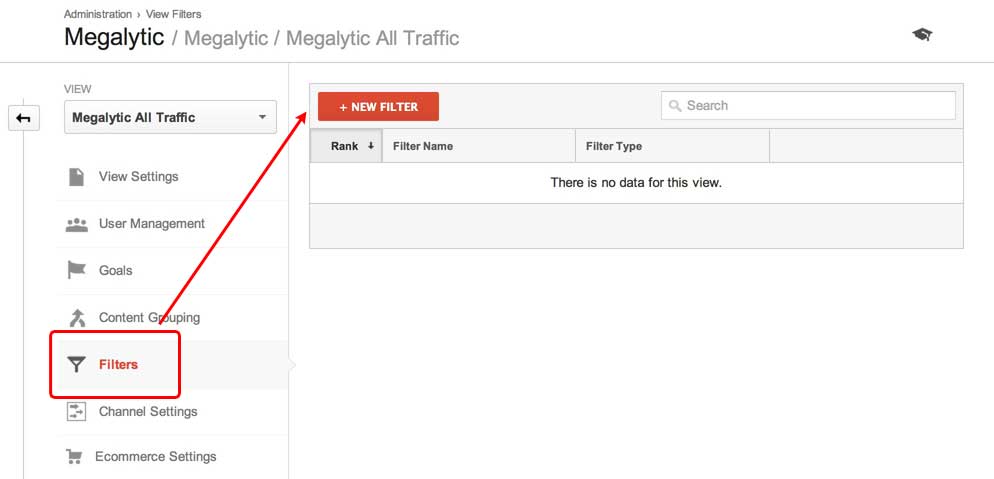5 Simple Techniques For In Which Order Does Google Analytics Filter Data
Table of ContentsIn Which Order Does Google Analytics Filter Data - The FactsA Biased View of In Which Order Does Google Analytics Filter DataIn Which Order Does Google Analytics Filter Data for DummiesThe Only Guide to In Which Order Does Google Analytics Filter DataWhat Does In Which Order Does Google Analytics Filter Data Mean?The Only Guide to In Which Order Does Google Analytics Filter Data
io" is the website as well as if I most likely to the homepage and click a few other web pages like signup page, it shows me in the real-time report popping-up as just how we established up in the filters. This page is the of internet site as well as you can see the sub-domain highlighted as.
Comparable to the previous process, we must develop a brand-new filter as pointed out in the last actions - In Which Order Does Google Analytics Filter Data. in this brand-new filter, I'm calling it as and also I'm selecting After that I'm keying the filter pattern as In this filter pattern, the pipe sign () is consisted of to connect any type of other hostname that you wish to include along with the other hostnames
The Only Guide for In Which Order Does Google Analytics Filter Data
This is just how you can go examine your site and also return view in real-time records. The real-time record currently reveals the adjustments that you made when producing that filter. In this instance, the Broken page describes regarding link of the web page i. e when the Page link being duplicated the very same, leaving out slash or any type of minute components.
Currently create a brand-new filter and also I call it as. Pick and select the filter fields.
Some Known Details About In Which Order Does Google Analytics Filter Data
The following directions will walk you with the procedure: Create a new Google Spread sheet (or open up an existing one). From the add-on summary web page, click the "+" in the leading right edge to include this add-on to your spread sheet.
Click "Approve". The add-on is currently set up. A "Google Analytics" submenu need to now show up in the Add-ons menu. Reports can be developed manually or with the assistance of the add-on's report development device. To use the tool, choose "Add-ons" > "Google Analytics" > "Develop a New Report" from the menu bar.
This is deliberate. In Which Order Does Google Analytics Filter Data. The device is indicated to assist obtain you started as well as supply you with the details you might not know off the top of your head. The remainder of the fields will certainly need to be entered by you. If you have any inquiries concerning what to place in each area, see the reference at the base of this web page.
Indicators on In Which Order Does Google Analytics Filter Data You Should Know
It can be a sheet read review in the spreadsheet you're currently in, or a various spread sheet altogether (as long as you have modify accessibility to that spreadsheet). To print the results to a various spread sheet duplicate the spreadsheet link and also paste it right into the cell to the right of the "spreadsheet-url" parameter.
This opens up a record organizing dialog where you can transform scheduling on and off, and establish how regularly your record will certainly run. To turn organizing on, check the box identified "Enable records to run immediately." As soon as scheduling is allowed you can utilize the select dropdown to control the time and frequency.
When scheduling records, make certain there is plenty of time in between when you produce the schedule and also when the timetable is intended to run. Name Description This is the record name. It will also be the name of the sheet where the record data is composed.
The adhering to expression returns the last day of the previous month: =EOMONTH(TODAY(), -1) The end date for fetching Analytics data. Requests can define an end date formatted as YYYY-MM-DD, or as a relative day (e. g., today, the other day, or Ndays, Ago where N is a positive integer). You can likewise use Sheets day functions to define this value programmatically.
Metrics can be defined in a couple of formats: As an example, every one of the following stand worths for the Metrics parameter. ga: sessions, ga: bounces ga: sessions ga: jumps ["expression": "ga: sessions/ga: individuals", "pen name": "Procedure per Customer", "formatting, Type": "FLOAT", "expression": "ga: total amount, Events/ga: pageviews", "alias": "Occasions per Pageview", "formatting, Kind": "DRIFT"] For go to website the majority of make use of instances, a checklist of statistics IDs is the simplest means to define the Metrics parameter.
The Buzz on In Which Order Does Google Analytics Filter Data
Name Description A list of measurements to query. content Measurements can be defined in one of two layouts: For instance, all of the following are valid worths for the Metrics parameter. For most use cases, a checklist of measurement IDs is the simplest method to define the Capacities specification.